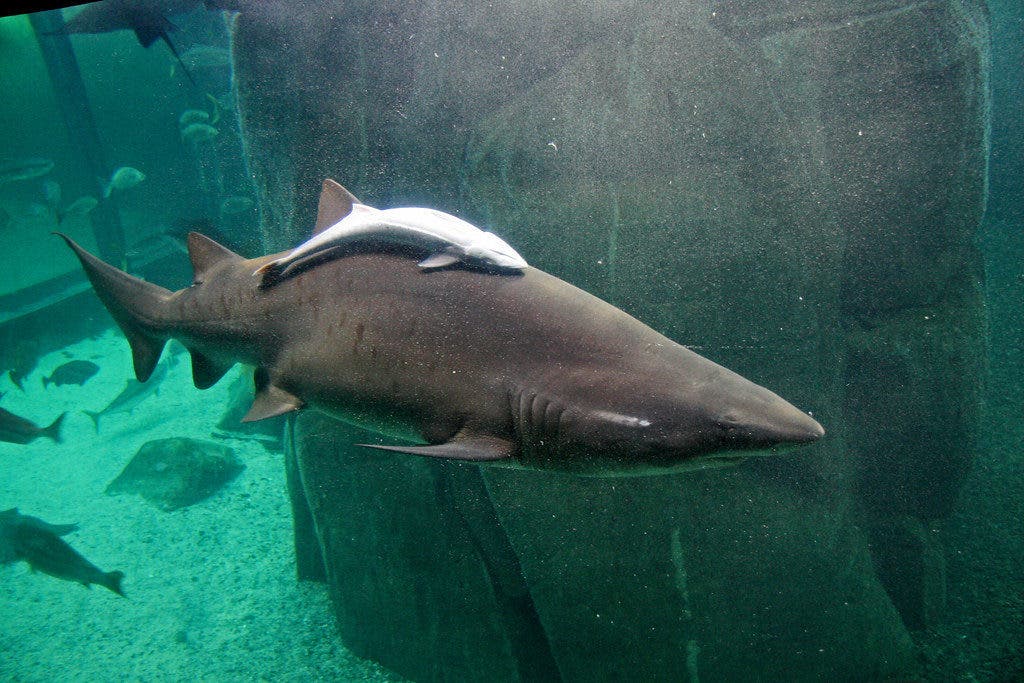Known as the hitchhikers of the marine world, remora fishes have high-powered suction disks on the back of their heads for attaching themselves to larger hosts. The reasons behind the evolution of the disks were unclear to researchers, who are now working to change that.

A study at New Jersey Institute of Technology (NJIT) has showcased a new biologically inspired remora disc capable of replicating the passive forces of suction and friction that power the fish’s ability, demonstrating up to 60% greater hold than has been measured for live remoras attached to sharkskin.
Researchers said the study’s findings provide evidence that today’s living species of remora have evolved a greater number of lamellae, spiky bones within the disk, in order to enhance their holding power and ability to attach to a broader range of hosts with smoother surfaces.
The study, published in the journal Bioinspiration and Biomimetics, indicated the disc model may be used to inform the design of more effective, lower-cost adhesive technologies in the future.

“The beauty behind the remora’s adhesive mechanism is that biological tissues inherently do most of the work,” said Brooke Flammang, who led the study. “The most significant aspect of this research is that our robotic disc relies completely on the fundamental physics driving the adhesive mechanism in remoras, allowing us to determine biologically relevant performance and gain insight into the evolution of the remora’s disc.”
The remora fish is believed to have first begun attaching to hosts with rough surfaces, akin to sharks, after having evolved its suction disc nearly 32 million years ago. The disc of remoras today now features a fleshy-soft outer lip for suction while the disc’s interior houses many more linear rows of tissue with tooth-like tissue projections, which the fish raises to generate friction against various host bodies.
While scientists have shed some light on the origins of the remora’s modified fin structure in previous studies, fundamental aspects of the disk’s evolution have largely remained unclear. “The evolution of the remora’s disc is largely unknown,” said Flammang.
“The ‘how’ is from the dorsal fin, although the intermediate evolutionary stages aren’t known,” explained Flammang. “If you look at a phylogeny of remoras it shows that those species that are thought to be more derived have more lamellae … the ‘why’ has been assumed to be for adhesive performance, but that was never tested before this paper.”
Kaelyn Gamel, the study’s first author, designed a remora-inspired disc from commercially available 3-D printed materials that could autonomously maintain attachment to various surfaces and be modified by adding and removing lamellae, enabling the team to investigate further.
“Our disc’s capability to add and remove lamellae while acting as a passive system allowed us to change the amount of friction along with the ambient pressure within the disc,” said Gamel. “We were able to compare the difference between no friction, some friction and a lot of friction based on the variation in lamellae number.”
The team conducted pull-off tests with their model disc underwater, experimenting with the model’s lamellar number (up to 12 lamellae) to measure the shear force and time it took to pull the disc from silicon molds with surfaces ranging from completely smooth to those exceeding shark skin roughness.
The team found that their disc’s adhesive performance was strongly correlated with an increase in the disc’s lamellae. The tests also revealed a minimum of six lamellae—the number coincidentally found on the 32-million-year-old fossil Opisthomyzon—were needed to maintain adhesion.
“What is most striking about these results is that for a given disc shape, there is an optimal range in which the friction and suction phenomena are balanced, and remoras have evolved to maintain this sweet spot of high-performance adhesion,” explained Flammang.
Now, the team argues their remora disk model will be used for future evolutionary studies to learn whether suction or friction predominated attachment in earliest remora ancestors and how the evolution of disc shape affects adhesion. The disc may also have engineering applications in everything from medical biosensors and drug delivery devices to geo-sensing tags.






